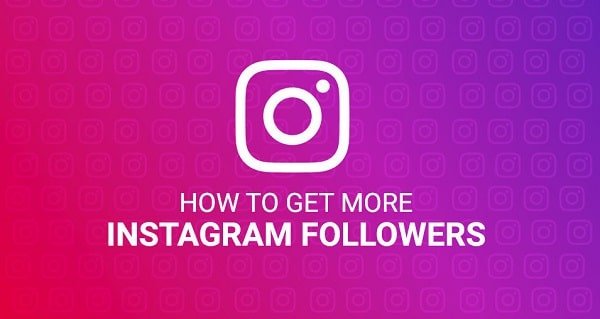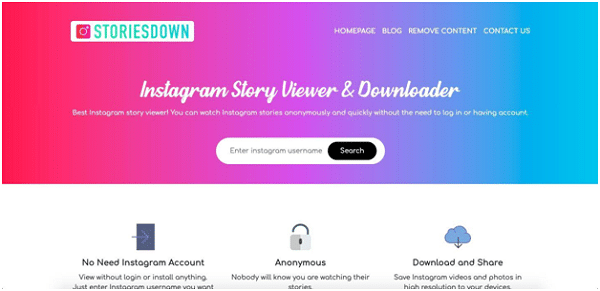Instagram was similar to any other social media website when it appeared on the scene back in 2010: it was loaded with selfies, pictures of pets, and food. In 2022, Instagram is not just an image-sharing platform anymore; it has become the future of e-commerce. The app has over a billion users now, and it isn’t going to slow down.
Instagram offers a wide range of features and analytics tools that help business owners create profiles, gain followers, increase engagement, gain insights into their existing customers, and sell their products and solutions quickly and effectively. These features and tools help business owners make marketing for their businesses more accessible and targeted yearly.
Check out some of the newest features on the platform! In the past year, Instagram has introduced loads of new resources for brands, including advanced analytics, shoppable Instagram posts, new strategies for utilising Instagram Stories as a traffic source, and the brand-new independent video platform IGTV.
It pays to have a presence on Instagram whether you are in e-commerce, education, or journalism and entertainment. But to succeed, you must fully understand the platform (as well as your audience), including the most effective types of content to share, how to develop an Instagram Stories plan, and how to monitor your analytics and KPIs.

Instagram’s role in E-commerce
The most obvious question is, why Instagram? Why not Facebook or Twitter, which has a more diverse user base? We know how excellent Instagram is for sharing photos and videos with loved ones. But what exactly attracts people to use this app? The answer lies in its visual nature.
For e-commerce companies wanting to promote their products, Instagram offers enormous opportunities. Millions of companies have discovered that having a visual presence on Instagram can significantly enhance their e-commerce marketing through stock photos, videos, or Instagram Stories.
Additionally, Instagram users are more active than the typical social media user. The platform still generates stronger engagement rates for brands when compared to both Twitter and Facebook.
However, Instagram users are more than just active; they frequently do online shopping. A recent survey found that the most popular categories on Instagram were apparel, beauty, shoes, and jewellery, with 75% of Instagram users reporting making a purchasing decision after seeing something on Instagram.
Beyond its remarkable capability to push products, Instagram is a fantastic platform for businesses to raise brand awareness and engage with new audiences. Of course, to create an Instagram marketing plan that genuinely connects with your target demographic, you must first grasp how the Instagram algorithm functions.
Instagram’s unpredictable algorithm
With improved user experience thanks to the algorithm, brands were now running in circles to find ways to engage people.
Figuring out Instagram’s algorithm is, in a way, a waste of time. Even the most successful brands and influencers on Instagram say they are just lucky and have made many mistakes over time. Instagram’s robust algorithm is updated every single day to accommodate rising trends. Trying to predict what might be the situation tomorrow is futile as not even the algorithm can predict that.
But this doesn’t mean you shouldn’t keep your eyes and ears open. The trick is to capitalise on trends as soon they arise so that you can make the best out of them. Always have the mindset to experiment as it can provide valuable lessons.
Earlier Instagram used to follow a chronological method of updating itself. But things changed when they decided to adopt an algorithm in 2016, and the app’s growing popularity prompted the company to make this decision. In a chronological system, users used to see 70% less feed than they would today. With the algorithm, the app could re-organise people’s feed so that they could discover more content relevant to their interests.
Figure out your niche in terms of content. If your brand caters to the audiences of that niches, chances are that Instagram will help you improve your engagement. Understanding your niche and its trends is crucial.
Instagram focuses on when you post more than it does on the content or engagement on the post, even if the feed is by no means reverting to the chronological system. When was a photo or video posted? You should see fewer posts from more than a week ago since the new Instagram algorithm will favour current posts.
Build a relationship with your audience. Like, comment and even share their posts so you can ask them to return the favour. Businesses now have a way to stay high on the list is terrific news. Request your followers to tag you in their content and ensure your Instagram posts and stories are optimised to attract as many comments as possible.
Creating your Instagram Business Profile
It’s now time to create a profile for your company. It necessitates a grasp of analytics intended to drive searchers to your website. Check to see if your Instagram app is updated first. If so, tap on the settings wheel icon at the top right after tapping on your profile photo at the bottom right. You may start doing business on Instagram by selecting “switch to a business profile.”
You should now connect your company’s Facebook page, add contact details like your email and phone number, create promotions, and more before you can link the profile.
The platform’s analytics feature, Instagram Insights, allows you to view information on the impressions and reach of your posts and the number of clicks your profile receives leading to your website. You can utilise the results of the insights to help you decide how to optimise your Instagram business profile best.
Tap the “promote” link after tapping any post to increase your followers and “likes.” Instead of letting Instagram choose who to target your posts for you, you can select the audience, spending limit, and campaign length here.
Setting business goals and promotional objectives.
Let’s talk about how to define your Instagram marketing goals and objectives. Of course, knowing exactly what “success” means to you is the first step in figuring out your goals and objectives on Instagram.
Are you leveraging Instagram to increase brand recognition and connect with more of your target audience? Are you using the platform to promote your services and products? Are you using Instagram to increase community engagement and foster brand loyalty? Will you employ Instagram for customer support? Will you utilise it to inform your audience about your brand or sector?
It is ultimately up to you to utilise Instagram to further your business objectives. There are many options available. Remember that the metrics you use to measure your performance on Instagram will be significantly influenced by the goals you establish. You’re more likely to focus on analytics like likes, comments, and shares if you’re using Instagram to grow a significant and active following.
Selling on Instagram
Now that your business profile is operational, it’s time to begin marketing. Instagram is designed for marketing and selling goods and services to the chosen target audience. Instagram posts intended for purchases are marked with a small shopping bag image. Users may click while browsing through their feed, and Pop-ups with the product names and details appear once they click.
The following step is to make purchasing possible. You should include an action button that directs Instagram visitors to your website or other accounts on your business profile. There, shoppers may buy something or make a reservation. Instagram is made to foster relationships between your brand and potential customers to grow your business and provide value to them. Instead of only pushing your services at your followers, a good content strategy helps you build relationships with them and lets them get to know you.
Determining target audience
After determining why you’re employing Instagram, it would help if you considered your target audience. A practical method is to expand your target customer’s profile to Instagram if you already understand who they are. What types of material are they interested in? Which hashtags do they employ? Which communities do they belong to? Responding to these questions is an excellent method to ensure you reach your target demographic on Instagram.
Researching your competitors is another option if you’re still experiencing difficulties. Visit the profiles of your competitors and click on “Followers.” The whole list of persons who follow them will be visible to you. This tactic may also be used to find out which hashtags your rivals are using. One of the most efficient ways to engage users on Instagram is using hashtags, especially now that you can follow hashtags just like other users. Make an effort to look for relevant hashtags as swiftly as you can. You’ll likely discover a few niche-relevant hashtags buzzing with activity from your core demographic.
Advertising on Instagram
Instagram allows you to develop advertising that increases user awareness of your page and traffic. Lead ads are the most fundamental type of Instagram advertising since they gather helpful contact information from potential customers without forcing them to leave the app.
Instagram Stories advertising may only be viewed for 24 hours after they launch and are shown above the user’s Instagram feed. These are the most effective forms of Instagram advertising and are excellent for raising brand and product awareness, soliciting user-generated content, and promoting special discounts.
Facebook and Instagram advertisements help build email marketing funnels. To do this, you must prepare your campaign’s components, such as a landing page or thank-you page, and outline your ad sequence funnel.
Performing an Instagram audit
The next step is to conduct an Instagram audit on your account while keeping your objectives and target audience in mind.
By doing this, you’ll be evaluating everything you’ve done on the platform so far and deciding if it still meets the needs of your business. Running an audit is a terrific way to ensure you’re on the right trajectory, even starting with Instagram marketing.
Your profile photo, bio, feed, captions, hashtags, and other profile components must feel thoughtful. On Instagram, even the accounts you now follow become a part of your brand. Do you think they’re motivating? Do they complement your company objectives? Or are they random and unconnected? As you audit your account, keep your goals in mind to ensure that each choice you make advances you toward your objectives.
Conclusion
Building an efficient Instagram marketing strategy is more crucial than ever for businesses as Instagram’s marketing platform continues to expand and change. And to achieve that, you need to have a solid grasp of the Instagram marketing environment and quantifiable insights on what works and doesn’t.
Ultimately, brands of all kinds can benefit greatly from establishing a presence on Instagram to expand an active community, attract new customers, or even increase e-commerce sales. Just a little work is required!

























